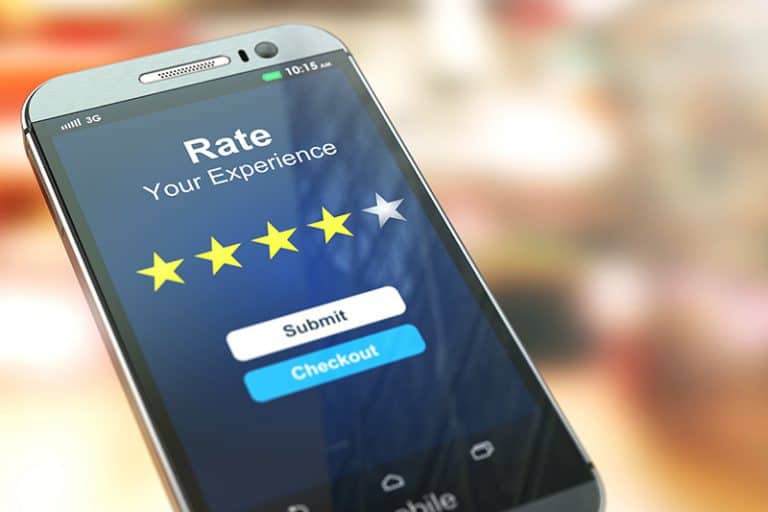Learn why both digital and web accessibility are key to making a truly customer-first experience.
Table of Contents
ToggleThe digital economy is a crucial part of our current commercial landscape. Websites are fast becoming the primary way consumers interact with companies. This makes it an ethical imperative for businesses to make sure their platforms are accessible to all who want to use them.
Yet, we are not even close to being at this point. A recent report stated 97.4% of U.S. sites studied failed to meet web accessibility guidelines in some way. The majority of these had more than 5 points of failure. However, aside from the ethical and legal duties at play, failing to prioritize accessibility means your company is also missing a basic form of customer service.
Let’s review a few ways you can make a positive impact by approaching accessibility with a customer-first attitude.
Digital and Web Accessibility – The Customer Journey
The customer journey should be treated as a force driving your business. Unfortunately, if your website has areas of inaccessibility, these can be enormous stumbling blocks in the way of a smooth, successful journey. To optimize the experience, you have to pay attention to areas for improvement.
It’s worth noting this commitment to inclusivity is vital for almost every part of the customer journey. Web accessibility is more than just a cornerstone of bridging the digital divide. It has a direct impact on drawing new visitors into your customer journey in the first place. After all, the more people can use your site unobstructed, the higher in the search ranking results you’re likely to climb. If people are unable to navigate your site, they can’t and won’t make purchases.
This can be helped by committing to regular journey assessments. Work with key members of your staff to simulate the various types of journeys your consumer takes with your business. Look at the range of online materials they interact with. Make sure you provide staff training so they can better consider the perspectives of people with various types of accessibility challenges in their lives. Indeed, review the types of assistive equipment and even devices in the Internet of Things consumers may be using to interact with you. Use this information as a basis for making improvements.
Digital and Web Accessibility – Beyond the Basics
A great customer experience and customer service should never be about providing the minimum attention to your consumers to prevent complaints. Yet, this is the approach of too many businesses today — they’re just trying to mitigate bad press. Unfortunately, the same approach is often taken with web accessibility. Your approach should be directed toward going above and beyond. Don’t just try to satisfy legal compliance or regulations. When you make efforts to create a welcoming online environment for everyone, this is where true inclusivity occurs.
This may require some more in-depth web development. Consumers living with accessibility-related challenges have greater access to assistive technology than ever before. This includes screen readers, braille displays, and voice recognition software. You need to make sure your platforms are compatible with as many of these as possible. Freelance web developers can be a good option for these programming projects. Finding a web developer with the right skills can be challenging, and it’s worth exploring various recruitment methods. Reach out across professional networks, industry events, and even web developer forums. Take the time to examine portfolios for previous work in accessibility. Make sure you talk to potential candidates about how they approach this with a customer-first mindset.
Alongside making the changes with outsourced providers, you need to make sure you put internal protocols in place. This makes certain developments in your business meet these standards. It can be wise to consider the primary cornerstones of web accessibility — content must be perceivable, operable, understandable, and robust. During the planning, execution, and review processes of anything you intend to put online, measure it against these elements. If you feel people may have issues in any of these areas, commit to making changes, even if this means starting from scratch.
Involving Your Consumers
An important aspect of customer service is not to treat your consumers as outsiders. Wherever possible, you should be helping them feel more closely connected to your business. The same goes for your digital and web accessibility efforts. Don’t make these things your customers are just subjected to. Reach out to keep them meaningfully involved in the process.
Your first duty is to be open about soliciting feedback from your target audience. Make posts on your website and social media channels about your commitment to making your services more accessible. Invite them to respond to you with their thoughts or areas they’ve found to be problematic. Be clear your accessibility efforts aren’t just directed to the disabled community. Encourage contact with those with neurodivergent traits, learning challenges, and socioeconomic hurdles. It can be wise to invite them to engage in the testing process with you, particularly if they use specific assistive technology like text-to-speech software.
Alongside direct conversations with consumers, it’s important to work with community organizations they trust and respect. Make connections with nonprofits that can provide you with information about elements those with specific mobility, mental, and learning challenges experience. Make sure you’re not just availing of their services. You should also make financial or business resource contributions to their cause in return. Ensure all your interactions are meaningful collaborations. Design these to result in better experiences for your consumers.
Digital and Web Accessibility – Conclusion
Accessibility of your digital platforms is an ethical duty and a boost to your business. When you treat it as a form of customer service, you can approach accessibility with a view to going beyond basic standards and making a meaningful impact on the customer journey. Wherever possible, keep your consumers part of your changes. Work with them to create an inclusive culture around your services.




